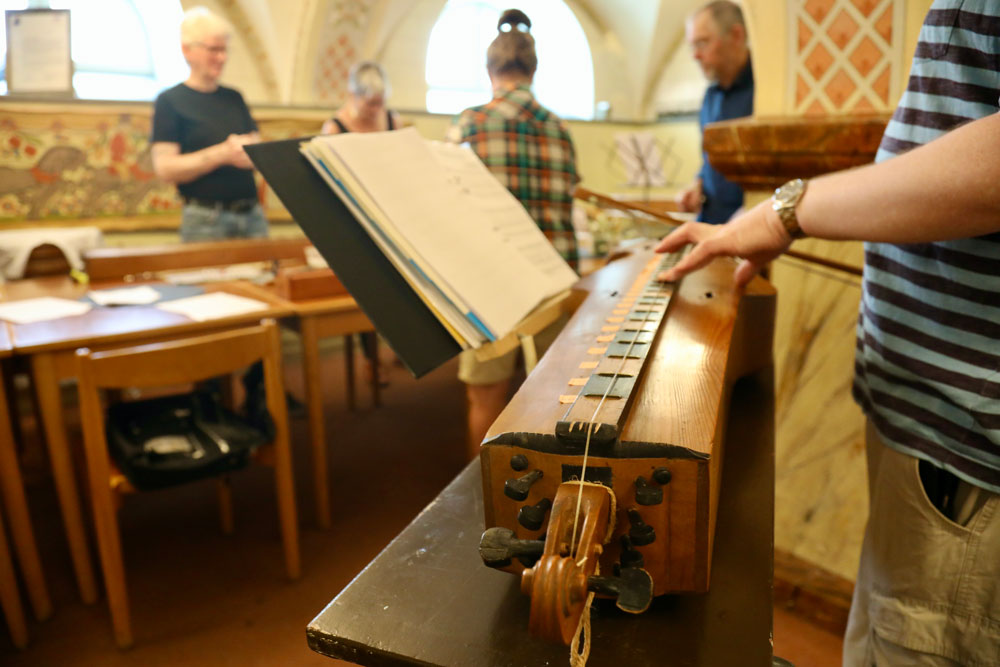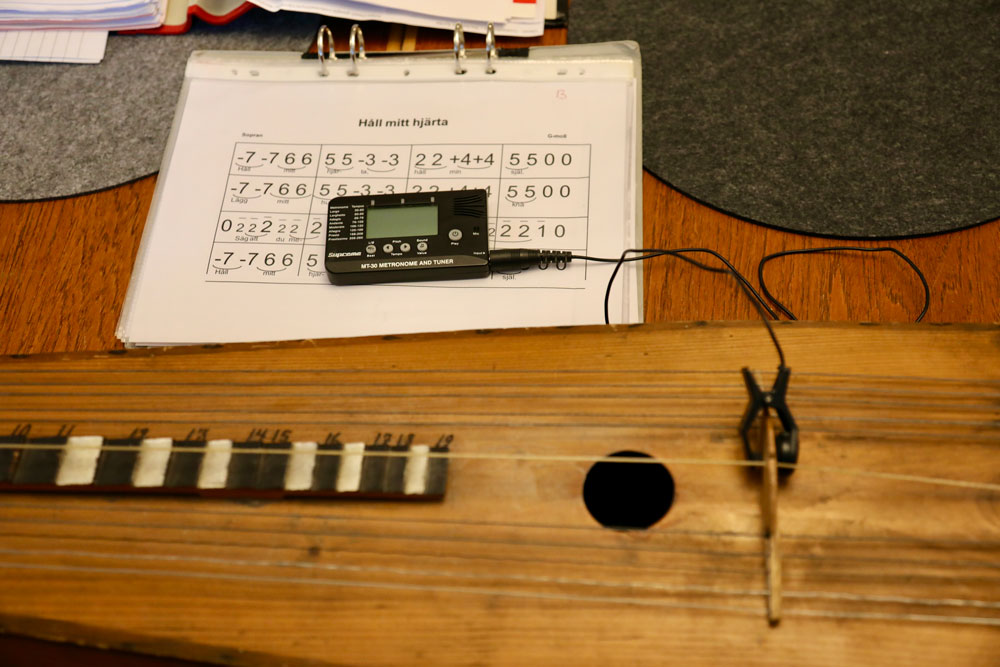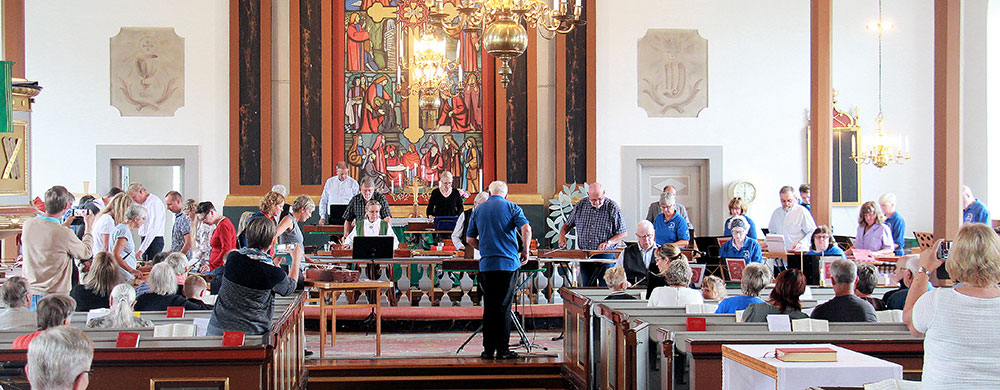- Startpage
- In English
- The Inventory
- Psalmodicon
Psalmodicon
The psalmodicon is a string instrument that was common in much of Sweden during the 19th century. Interest in the psalmodicon has seen a revival in recent decades.
Location: Nation wide

Photo: Johan Skog.
In its simplest form, the psalmodicon consists of a rectangular body measuring one meter with a lid, and sometimes without a bottom. The lid is usually made of spruce wood with a single string made from twisted gut. A fretboard with indentations creating lateral frets is placed at the center of the lid. The psalmodicon is played with a bow, creating different tones when the string is pressed against the frets.
The psalmodicon is intended to be easy to play. The instrument is placed horizontally on the player’s lap or on a table, and is played using a system called siffernotskrift. The notes correspond to different numbers on the fretboard or the lid. The player then presses the string according to the numbers.
As many players build their own psalmodicons, there is significant variation in their shape. The lid can be arched or flat with one or more holes, which changes the instrument’s tone. Some psalmodicons have several strings and sometimes sympathetic strings. The latter are not touched when playing, but vibrate due to the sound waves.
The psalmodicon was brought to Sweden and developed by the priest Johannes Dillner (1785–1862). He had a great personal interest in singing, and wanted to improve the music at churches and schools. He first encountered the psalmodicon in Denmark and Norway, but developed the instrument and made it easier to play. During the 1830s, the psalmodicon was introduced to a wider audience when Dillner served as vicar in Östervåla, Uppsala.
The new hymnal of 1819 resulted in a need for a simple musical instrument. The book contained 500 hymns, half of which were new. This proved to be a great challenge, as most people lacked the musical skills necessary to read the notes of the hymns. Dillner created the siffernotskrift system to allow as many people as possible to play the psalmodicon. His vision was that people could learn to play the instrument in twenty minutes. The simplicity of the psalmodicon made it a success, and it was used in churches that lacked an organ, at schools, and within the labor movement and the temperance movement. Swedish immigrants also brought the instrument to the United States, where it gained some popularity. The psalmodicon gradually lost its status as organs and guitars became more common in churches.
In recent years there has been a renewed interest in the psalmodicon, with more people building their own instruments and learning how to play them. The Nordiska Psalmodikonförbundet was founded in 1993 and publishes the magazine Psalmodika. There is also a psalmodicon museum in Östervåla.

Photo: Johan Skog.

Photo: Smålandsposten.

